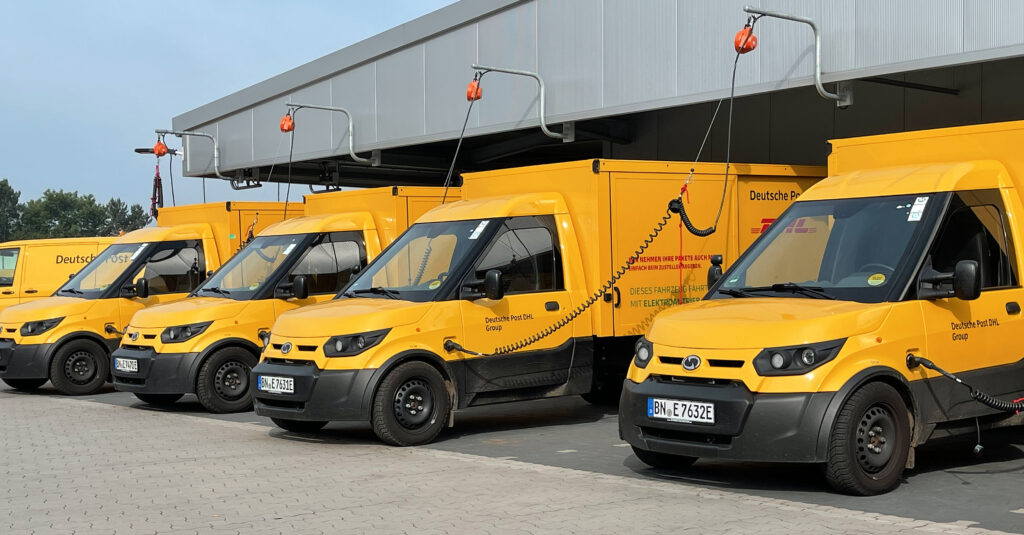Here are some ideas to kickstart your development of driver training resources for EVs. You’ll need to be ready to help drivers make the most of EVs — before they hit the road.
Charging and battery management
- Start with education
A recent survey conducted by Natural Resources Canada showed that 66 per cent of Canadians had never been in an electric vehicle. The same is likely true for many of your employees. Drivers will need training on the basic terms (see Lesson 1) to help them understand what it means to charge their vehicles efficiently. This includes explanations of how kWh are used and recovered, the differences between Level 1, Level 2 and DC Fast charging, and what types of charging connectors will work with their vehicles. Feel free to share parts of this course with them! - Establish charging protocols
Whether that’s plugging in every night at a home charger or plugging in at your depot, ensure your drivers understand their charging routine and what is expected of them.

- Protect your charging equipment
Train drivers on how to connect properly and how to keep connectors safe from debris build-up, damage or misuse. Help them get into the habit of properly stowing away cables after each charge. They will also need to ensure that they do not accidentally run over cables while pulling in and out, which can be costly to repair. - Maximize range
Drivers must understand the dynamics of how to maximize range by reducing power consumption. This includes explaining the increased demand that comes from vehicle systems such as climate control, especially in very hot or cold weather. - Configure settings
Each EV in your fleet will have smart charging and preconditioning settings that are managed either by in-vehicle settings or telematics. Your driver training resources for EVs should cover how to configure and use these settings based on your fleet’s own protocols.
Train drivers on how to use public charging, especially if this is going to be part of the way you manage longer routes. They should at the very least understand how to find charging stations in emergencies, as well as how to pay (including loading any needed apps on their phones).
Driving habits
Electric vehicles are high-performance machines that are fun to drive. But a high-performance driving style — from overuse of the instant torque delivered by the electric motors to the power drain of repeated aggressive acceleration — will have a direct impact on the battery’s state of charge. Because EVs are heavier, cornering at high speed and sudden braking can reduce tire lifespan, and high-speed cruising can also drain a vehicle’s battery more quickly, thus reducing its available range.
Electric vehicles don’t produce the same engine noise as their combustion cousins. While most EVs have a low-speed noise device that projects sound ahead and behind the vehicle, your drivers must learn to be more vigilant, as pedestrians and cyclists may not hear you coming. On the plus side, most employees love the quiet of the EV experience, especially when listening to music or podcasts or taking calls on the road.
- Adopt one-pedal driving
Drivers should understand how regenerative braking and one-pedal driving (coasting to a motor-assisted stop rather than applying the brake) work to recharge the battery, and how to adjust their driving style to make the most of these systems. One-pedal driving also helps to reduce driver fatigue. - Drive gently
Establish guidelines around gentle acceleration and moderate highway speeds to maximize the vehicle’s range and reduce tire wear. - Prep for winter
Because of the vehicle weight, regenerative braking might need to be toggled lower on a medium-duty vehicle to give the driver more control and avoid skidding on winter roads. To conserve range, drivers will need to schedule cabin preconditioning while an EV is plugged in and prioritize wheel and seat heating whenever possible.

Read more about the factors that have an impact on winter driving performance.
Understanding the vehicle
There are some features in EVs that will be new to those who have only driven traditional vehicles in the past, and it will be very important for these to be understood to ensure EVs can perform at their best.
- Walk through software and features
Electric vehicles may come with new features, from in-cabin touchscreens to vibrating seats to modes that optimize battery use during “idling.” (Electric vehicles don’t technically idle, but many can tap into the high-voltage battery to keep the cabin comfortable while parked, for instance during a lunch break or while completing a log.) Drivers will need to be guided through how to use their vehicles and what all those bells and whistles mean.
Drivers should be informed of the role telematics will play in their work lives, including regular coaching and charging reminders based on data collected during their time driving.
How you can help during training
To ease the transition, give your drivers less ambitious routes while they get to know their vehicles, as well as during your first winter when range may be less predictable. And finally, give your drivers a way to provide feedback, ask questions and share tips and tricks as they learn.
Next, learn what your drivers need to know about caring for electric vehicles.
Reproduction of any or all of this material is strictly prohibited without permission. Please contact fleets@electricautonomy.ca for inquiries. Copyright © 2025 – Electric Autonomy Canada – ArcAscent Inc. – All Rights Reserved
Want to learn more? Sign up or log in so you can track your progress, earn a course certificate and receive exclusive invitations to our live learning sessions.